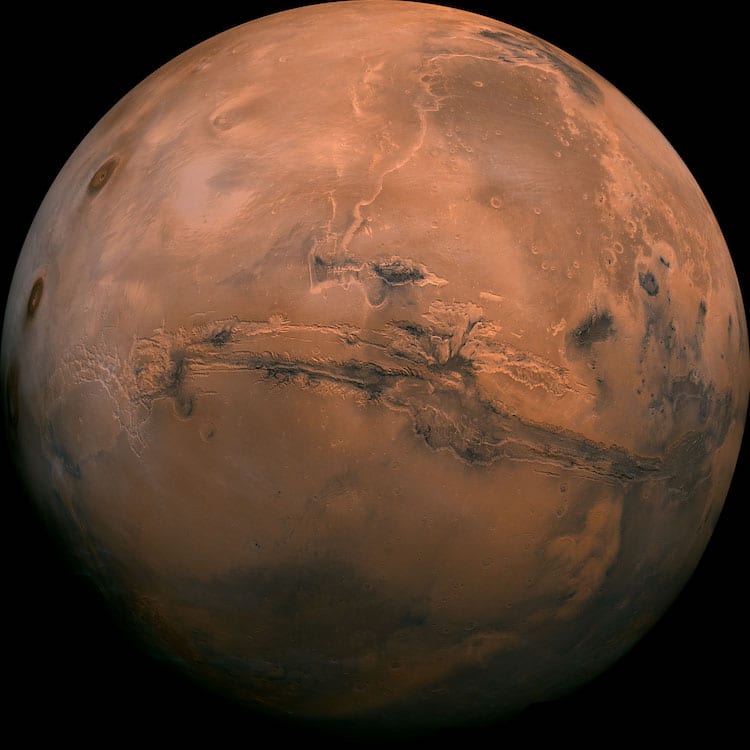Illustration: NASA
Mars has long been a source of fascination and inspiration for humans.
Often the protagonist in science-fiction novels and films, the Red Planet has captured our imagination.
This sparked the idea that life on Mars was possible.

Illustration: NASA
Since the late 1950s, NASA has been working on the idea of a crewed mission to Mars.
In 1964, the Mariner 4 spacecraft was the first to obtain close-up photos of the Martian surface.
Currently, thePerseverance roverandIngenuity helicopterare exploring Mars and making history while they do it.

Photo: NASA/JPL-Caltech
All this is to keep moving forward and bring us one step closer to sending humans to Mars.
In fact, the agency is under presidential orders to send humans to Mars by 2033.
So what is it about Mars that has attracted NASA?

Northern ice caps on Mars (Photo: NASA/JPL-Caltech/MSSS)
What characteristics make this planet a candidate for human visitsand possibly colonization?
Photo: NASA/JPL-Caltech
It’s accessible.
Mars is thesecond closestplanet to Earth.

Photo: NASA
While Venus is even closer, there is no evidence of life past or present on that planet.
That’s what makes Mars so interesting.
Its distance from Earth makes it a relatively quick journey.
The closest recorded distance between the planets occurred in 2003 when they were just 34.8 million miles apart.
But, at their furthest, they’re 250 million miles apart.
So, NASA needs to calculate every launch very carefully.
In fact, there’s actually only one ideal launch window and it occurs every 26 months.
This is when Mars and Earth line up without the sun interfering.
All told, it can take anywhere from 6 to 8 months to reach Mars.
It’s a terrestrial planet.
Aside from Earth, there are three otherterrestrial planetsin our solar system.
Mercury, Venus, andof courseMars are the others.
Mars also has a dense metal core like Earth.
And that’s not where the similarities end.
However, there are some elements that could pose a danger to humans.
This includes magnesium, sodium, potassium, and chlorine.
However, the soil is also rich in salt perchlorates, which makes it toxic to plants and humans.
Dust is also a concern, particularly as high winds whip soil around quite frequently.
Northern ice caps on Mars (Photo: NASA/JPL-Caltech/MSSS)
It has an atmosphere.
A planet’s atmosphere is what protects us from solar radiation, among other things.
Though Mars' atmosphere is thin, it’s still present and could be useful for humans.
Its days are similar to ours.
On Earth, we’re used to 24-hour days, but not every celestial body follows the same pattern.
For instance, one day on the Moon is the equivalent to a month on Earth.
And a night on Venus lasts 120 Earth days!
That rhythm would take some getting used to.
Luckily, a day on Mars is nearly identical to ours24 hours 39 minutes and 35 seconds.
Photo: NASA
Its weather conditions are acceptable.
In comparison to the scorching temperatures found on Mercury and Venus, Mars isbearable.
However, the agency is already looking forward to Mars.
In 2020, NASA confirmed the presence of large saltwater lakes under the south polar region.
Obviously, any hope for sustainable life on Mars requires access to water.